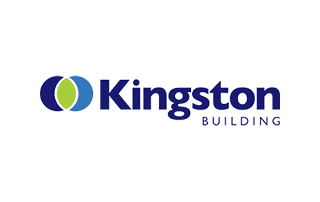Before embarking on your journey through Queensland’s town planning process, taking a step back to meticulously consider your home or property needs and requirements is essential.
Think of this foundational step as the blueprint to your project dreams, ensuring your vision aligns with practical realities and regulatory frameworks.
Throughout this crucial phase, aspirations meet the drawing board. Here, your vision will begin to transform into a clear, achievable plan that reflects your desires and the demands of the planning landscape.
This guide covers and includes the following:
- The essential elements of the town planning process
- A step-by-step guide to securing a planning permit
- Budgeting-related advice for the town planning process
Understanding your property needs involves a thorough assessment of several key factors. First, consider the purpose of the development or modification — will it enhance a living space, improve functionality, or increase property value?
Identifying the primary objective is what guides the design and planning process, ensuring the result aligns with your initial vision.
Next, it’s time to evaluate spatial requirements, including size, layout, and integration with existing structures and natural features.
This step is crucial for aesthetic coherence and functional utility, ensuring the new development complements its surroundings and meets your lifestyle and operational needs.
As accessibility and sustainability are paramount, you’ll need to consider how the project will accommodate current and future mobility needs. Consider ways to incorporate sustainable practices and materials to minimise environmental impact and potentially reduce long-term operational costs.
BPLANNED & SURVEYED TIPS:
|
By thoughtfully considering your property needs and requirements and effectively utilising available tools and resources, you will create a solid foundation for your project.
Such preparation aligns your dreams with the realities of town planning and development and sets the stage for a smoother, more successful journey toward realising your vision in Queensland’s dynamic property landscape.
Navigating the Town Planning Process: Essential Elements
Navigating the town planning process in Queensland requires a comprehensive understanding of several key components, each playing a crucial role in ensuring the successful development approval and implementation of your property project.
Let’s take a closer look at these elements, including recommendations for selecting suitable services and tips for sourcing quality assistance locally.
1. Professional Consultation:
- Architects and Designers: Choose professionals with strong portfolios in your specific project field (residential, commercial, industrial). Consider professionals from the Australian Institute of Architects for quality assurance.
- Town Planning Consultants: Engage consultants who are well-versed in Queensland’s planning laws and have a proven track record with the local council. Members of the Planning Institute of Australia are generally reliable.
- Environmental Consultants: If your project requires an environmental assessment, select consultants who specialise in environmental law and have experience with projects in your area.
2. Regulatory Documentation and Tools:
- Local Council Planning Schemes: Access schemes through local council websites. Many councils provide online mapping tools and resources to help you understand zoning and overlays applicable to your property.
- State and Federal Regulations: Use government portals like Queensland’s Department of State Development, Infrastructure, Local Government and Planning for state-level information. Refer to Australia’s Department of Agriculture, Water and the Environment for federal regulations.
3. Design and Planning Software:
- CAD Software: Regarding architectural drawings, software like AutoCAD or Revit is widely used and recommended for precision and compatibility with industry standards.
- 3D Modeling Software: Tools like SketchUp are user-friendly and helpful for visualising your project three-dimensionally, which can be beneficial for council and community presentations.
Brisbane Standard Drawings (BSD)
4. Financial Planning Resources:
- Cost Estimation Tools: Use software or databases that provide up-to-date construction costs and fees associated with planning and development in Queensland. Consultation with a quantity surveyor will also provide you with bespoke financial and cost management advice.
5. Community Engagement Platforms:
- Digital Platforms: Utilise social media or dedicated community forums to engage with local communities, gather feedback, and build project support.
Tips for Sourcing Quality Components Locally:
- Leverage Local Networks: Engage with local professional associations, such as Queensland’s Urban Development Institute of Australia (UDIA), for recommendations on services and suppliers.
- Attend Industry Events: Workshops, seminars, and networking events are great opportunities to meet professionals and learn more about the latest tools and trends in town planning and development.
- Consult Reviews and Testimonials: Before engaging with professionals or purchasing software, be sure to read reviews, case studies, and testimonials for quality assurance, including information regarding the suitability of your project.
From conception to development approval, each component plays a crucial role. By paying close attention to them, not only will you achieve your vision, but you’ll meet regulatory requirements and enhance the local community in the process.
Securing Your Planning Permit: A Step-by-Step Guide
Navigating the planning permit process in Queensland involves several vital steps, each requiring careful attention to detail and adherence to regulations.
Here’s a comprehensive guide to keep you on the right track and let you know when seeking professional expertise is essential.
Step 1: Initial Investigation
- Safety Precautions: Start with a thorough initial investigation of your property’s zoning, including any overlays or local planning instruments that may apply. This step will help you avoid costly mistakes and understand what is and isn’t possible on your building site.
- Best Practices: Contact a town planning consultant or local council for clarity and help, including missed opportunities or constraints.
- Professional Town Planner: If your project involves complex planning schemes or significant environmental impacts, now is the time to engage a town planning professional or environmental consultant.
Step 2: Conceptual Development and Design
- Safety Precautions: Ensure your design complies with all local planning regulations and guidelines. Non-compliance can lead to application refusal or costly redesigns.
- Best Practices: Work closely with your architect or designer to develop a concept that not only meets your needs but also aligns with council expectations and community standards.
- Professional Town Planner: Engage an architect or professional designer, especially for complex projects or those of a significant scale.
Step 3: Detailed Assessment and Documentation
- Safety Precautions: Accurate and comprehensive documentation is dire. As a result, missing or incorrect information can delay the process.
- Best Practices: Include detailed plans, environmental impact assessments (if required), and a robust argument for how your project meets planning criteria.
- Professional Town Planner: This is a crucial stage regarding professional input. They will ensure your application is complete and well-prepared, increasing your chances of approval.
Step 4: Development Application Submission and Follow-Up
- Safety Precautions: Double-check your application for completeness and accuracy before submission.
- Best Practices: Submit your application via the recommended method from your local council. Whether online or in person, keep a copy for your records.
- Professional Town Planner: While not strictly necessary, having a professional submit your application can be beneficial. They act as liaisons with councils, navigating any questions or requests for additional information.
Step 5: Addressing Council Feedback and Amendments
- Safety Precautions: Be prepared to make adjustments to your plans based on council feedback. Resistance or delays can affect your project timeline.
- Best Practices: Approach any change requests constructively and considerately, working with your professionals to respond promptly.
- Professional Town Planner: If significant changes are requested, consult your professionals to understand the implications and best path forward.
Step 6: Development Approval and Post-Approval Requirements
- Safety Precautions: Ensure you understand all conditions attached to your approval, including any obligations before, during, and after construction.
- Best Practices: Comply with all conditions, and commence work within the timeframe specified by your planning permit to avoid expiration.
- Professional Town Planner: For complex developments, maintaining a relationship with your town planner will help you navigate post-approval processes, including compliance and potential amendments.
Throughout your journey, overarching safety precautions include ensuring legal and regulatory compliance and mitigating the risk of project delays, refusals, or legal challenges.
Budgeting for Your Planning Permit Journey
Understanding the financial aspects involved in obtaining a planning permit in Queensland is crucial for a smooth and stress-free development application process. Below is a simplified cost breakdown that outlines typical expenses.
Here, we’ll explore avenues for financial support, such as grants, subsidies, and incentives available in Australia, and offer practical tips for budgeting and saving.
Cost Breakdown:
| Expense Category | Estimated Cost Range (AUD) | Notes |
| Professional Consultation Fees | $2,000 – $10,000+ | Varies by project complexity and consultant expertise. |
| Development Application Fees | $500 – $10,000+ | Dependent on the local council and project scale. |
| Environmental Impact Assessment | $5,000 – $20,000+ | If required, varies based on project size and environmental sensitivity. |
| Architectural Design Fees | $3,000 – $15,000+ | Vary significantly by project scope. |
| Legal Fees | $1,000 – $5,000+ | If legal advice or representation is needed. |
| Additional Studies/Reports | $1,000 – $10,000+ | Traffic, heritage, acoustic studies, etc., if applicable. |
Grants, Subsidies, and Financial Incentives:
- National Housing Finance and Investment Corporation (NHFIC): Offers affordable housing finance to support more Australians requiring affordable, quality housing.
- Renewable Energy Incentives: Various state and federal incentives for incorporating renewable energy solutions into your project.
- State-based Grants: Many Australian states offer specific grants or assistance programs for property projects that meet certain criteria, such as rural development or innovation in sustainable building practices.
Tips for Budgeting and Cost Saving:
- Get Multiple Quotes: For consultancy, design, and any studies required, obtaining several quotes helps ensure you’re getting competitive rates.
- Understand All Potential Costs: Early in the planning phase, consult with professionals to identify all possible costs, including those that may not be obvious, such as council contributions and impact fees.
- Consider Phased Approvals: If feasible, breaking your project into phases can help spread the cost over time, making financial planning more manageable.
- Explore Pre-Approval Consultation Services: Some councils offer pre-application advice services, which provide valuable insights into potential issues or costs before committing to the full development application process.
- Leverage Existing Resources: Utilise free online resources and government portals for guidance and to potentially save on consultancy fees for initial research.
By carefully planning and researching all potential costs associated with obtaining a planning permit in Queensland, you can set a realistic budget that accounts for all aspects of the development application process.
Furthermore, exploring available grants, subsidies, and financial incentives will provide you with additional support to offset some of the aforementioned costs, making your project more financially viable.
Your Planning Permit Journey: Key Takeaways
As we wrap up our comprehensive guide to navigating the town planning process in Queensland, let’s revisit the insights and strategies that will empower you to move forward with confidence.
While complex, you can successfully navigate this journey with the right knowledge and resources. The following are key takeaways to consider:
Understanding the Process:
- The importance of grasping Queensland’s town planning process to ensure project viability and compliance.
- Engaging with professional services is not just beneficial but often necessary to navigate the intricate planning landscape.
Environmental and Regulatory Considerations:
- Environmental impact assessments play a crucial role in project planning, emphasising sustainability and compliance with state and federal regulations.
- Securing necessary environmental permits is crucial and requires detailed documentation and, at times, extensive assessments.
Aligning Dreams with Reality:
- Careful consideration of your property needs and requirements ensures your project aligns with your vision and regulatory standards.
- Utilising the right tools and resources, including professional advice and planning software, turns your vision into a viable plan.
The Essential Elements:
- Professional consultation, regulatory documentation, design and planning software, and financial planning resources are the key components of a successful application.
- Engaging with the local community and leveraging digital platforms for feedback enhances project acceptance and success.
Financial Planning and Management:
- A clear understanding of associated costs, including consultation fees, development application fees, and potential studies, is crucial for budgeting.
- Exploring grants, subsidies, and financial incentives provides financial relief and supports project feasibility.
You should now have a clear understanding of the complexities involved in obtaining a planning permit in Queensland, including some insight into the tools required to navigate each step of the process.
From initial considerations to financial planning and submission, this journey requires diligence, foresight, and a proactive approach to challenges.
With these points in mind, you’re well-equipped to embark on your planning permit adventure. We hope your project not only meets regulatory requirements but also achieves your development goals, contributing positively to Queensland’s dynamic landscape.
Ready to Bring Your Vision to Life?
A comprehensive understanding of the planning permit process is the first step towards realising your vision when embarking on your property project in Queensland.
That said, navigating this journey often requires personalised guidance and expert insight to align aspirations and challenges.
At bplanned & surveyed, we aim to illuminate a path toward success. Our team of experienced professionals is dedicated to providing tailored advice, innovative solutions, and support throughout every step of the planning permit process.
Whether you’re seeking clarity regarding environmental considerations, assistance with navigating regulatory complexities, or simply want to ensure your project is on track for development approval, we’re here to help.
Contact us today for personalised advice or to obtain a quote that’s tailored to your project needs.
Let bplanned & surveyed guide you through the planning landscape, ensuring a development journey that’s smooth and successful.




























